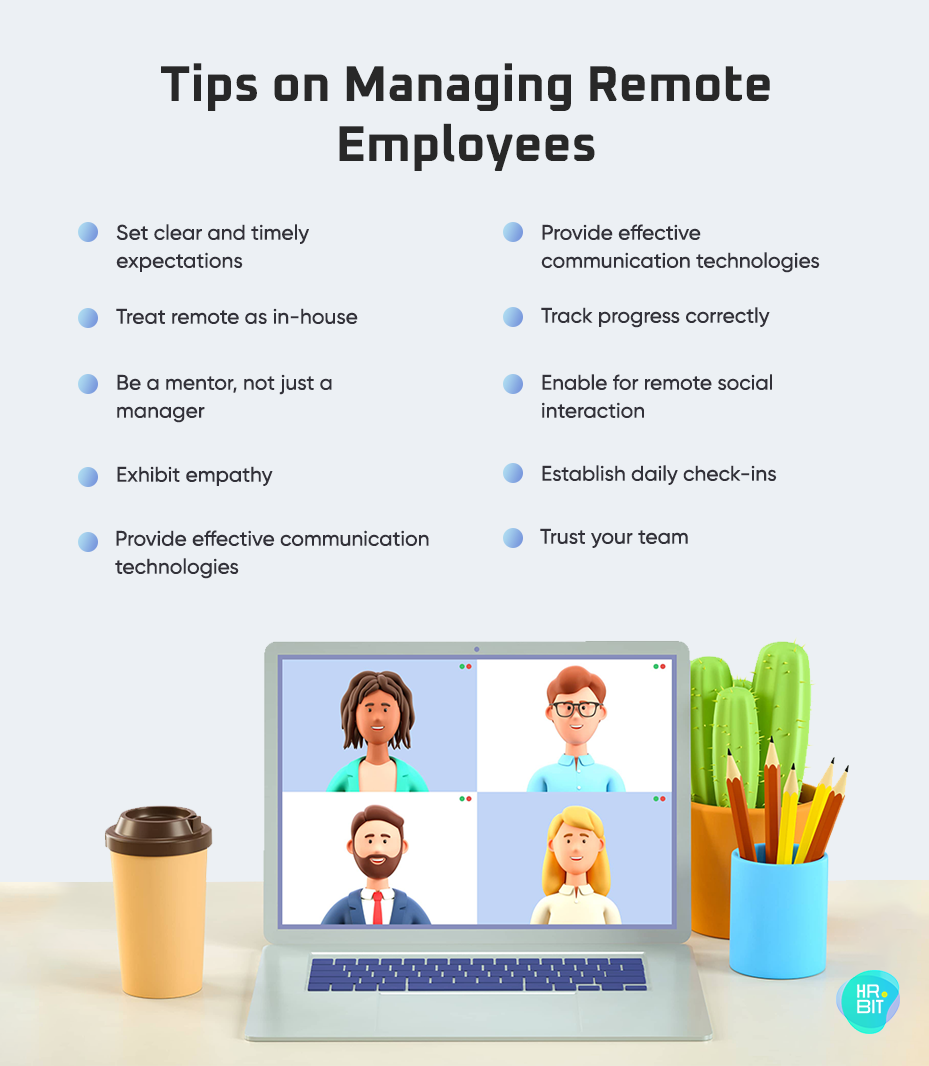
The Ultimate Guide to Remote Work Policies: Managing Remote Employees Effectively
The world of work has undergone a seismic shift, and remote work is no longer a niche perk – it’s a fundamental part of how many businesses operate. From bustling startups to established enterprises, companies are embracing the flexibility and talent access that remote work offers. But with this exciting evolution comes a crucial need: clear, comprehensive remote work policies.
Simply telling your team, "You can work from home!" isn’t enough. Without proper guidelines, managing remote employees can feel like navigating a ship without a compass. This long-form guide will walk you through everything you need to know about creating effective remote work policies and mastering the art of managing a distributed team, making it easy for even beginners to understand.
Why Are Remote Work Policies Essential for Your Business?
Think of a remote work policy as the rulebook for your remote team. It’s not about stifling freedom; it’s about providing structure, clarity, and fairness. Here’s why having one is non-negotiable:
- Clarity & Consistency: Employees know exactly what’s expected of them, regardless of where they’re working. This reduces confusion and ensures everyone is on the same page.
- Legal Protection: A well-drafted policy can protect your company from potential legal issues related to workplace safety, data security, and employee rights, especially across different states or countries.
- Enhanced Security: It outlines protocols for data protection, device usage, and network security, safeguarding your valuable company information from potential breaches.
- Employee Well-being & Engagement: By setting clear boundaries and expectations, policies help prevent burnout, promote work-life balance, and show employees you care about their health and safety.
- Improved Productivity & Performance: When expectations are clear, and the right tools are in place, employees can focus on their work, leading to better outcomes and higher quality performance.
- Fairness & Equity: Ensures that all remote employees are treated consistently, from equipment provision to performance reviews, fostering a sense of fairness.
Key Components of a Robust Remote Work Policy
Your remote work policy should be a living document, tailored to your company’s unique culture and needs. However, certain core components are universal and vital for success.
1. Eligibility & Application Process
- Who Qualifies? Define which roles or departments are eligible for remote work. Is it everyone, or only specific positions?
- Criteria: What factors determine eligibility? (e.g., performance history, nature of the job, required in-person collaboration).
- Application Process: How does an employee request to work remotely? Is there an application form, a manager approval process, or a formal agreement?
- Trial Periods: Consider a trial period for new remote arrangements to assess suitability.
2. Work Hours & Availability
- Core Hours: Do employees need to be available during specific "core hours" for meetings or collaboration, even if they have flexible schedules?
- Time Zones: How will you manage teams spread across different time zones? Are there expectations for overlap?
- Responsiveness: What are the expectations for responding to emails, messages, or calls? (e.g., within 2 hours during core hours).
- Breaks & Overtime: Clarify expectations around lunch breaks, rest periods, and how overtime (if applicable) is approved and tracked.
3. Communication Expectations
This is arguably the most critical aspect of managing remote teams.
- Tools: Which communication tools are sanctioned for different purposes? (e.g., Slack for quick chats, email for formal communications, Zoom for video calls).
- Frequency: How often are team meetings, one-on-ones, or project updates expected?
- Preferred Channels: When should someone use chat vs. email vs. a phone call?
- Asynchronous vs. Synchronous: Educate employees on the difference and when to use each. (Asynchronous: not real-time, like email; Synchronous: real-time, like a video call).
- "Digital Etiquette": Guidelines for professional online behavior, respecting quiet hours, and clear messaging.
4. Technology & Equipment
- Company-Provided Equipment: Will the company provide laptops, monitors, keyboards, or other essential equipment?
- Personal Equipment Use (BYOD – Bring Your Own Device): If employees use personal devices, what are the security requirements?
- Software & Tools: List all required software, collaboration platforms, and project management tools.
- Technical Support: How do employees get IT support when working remotely? What are the response times?
- Internet Connectivity: Set minimum requirements for internet speed and reliability. Will the company offer a stipend for internet?
5. Data Security & Confidentiality
This section protects your company’s sensitive information.
- Secure Networks: Requirements for using secure, password-protected Wi-Fi networks (avoiding public Wi-Fi for sensitive work).
- Password Policies: Strong password requirements and multi-factor authentication (MFA).
- Device Security: Antivirus software, firewalls, and keeping operating systems updated.
- Data Handling: How to store, transmit, and dispose of confidential company data securely.
- Physical Security: Securing physical documents, company devices, and sensitive information in the remote workspace.
6. Performance Management & Evaluation
- Goal Setting: How will performance goals be set and tracked for remote employees? Focus on outcomes, not just hours.
- Feedback: Regular feedback mechanisms (e.g., weekly check-ins, monthly reviews, formal quarterly/annual appraisals).
- Performance Issues: How will performance concerns be addressed with remote employees?
- Development: Opportunities for training, skill development, and career growth for remote team members.
7. Company Culture & Engagement
- Inclusion: How will remote employees be included in company events, celebrations, and social activities?
- Team Building: Strategies for fostering team cohesion and camaraderie in a distributed environment.
- Values: Reinforce company values and how they apply in a remote setting.
- Recognition: How will achievements and contributions be recognized and celebrated?
8. Health & Safety (Ergonomics)
- Ergonomic Workspace: Encourage employees to set up a safe and ergonomic home office. Provide resources or checklists.
- Wellness: Promote regular breaks, physical activity, and mental health resources.
- Work-Life Boundaries: Encourage employees to disconnect after work hours to prevent burnout.
- Accident Reporting: Procedures for reporting work-related injuries or incidents that occur in the remote workspace.
9. Expenses & Reimbursement
- Stipends: Will the company offer stipends for internet, utilities, or office supplies?
- Equipment Purchase: Policies for purchasing approved equipment and how reimbursements are handled.
- Travel: Policies for remote employees who need to travel for in-person meetings or company events.
- Tax Implications: Advise employees to consult tax professionals regarding any home office deductions (though companies should not provide tax advice).
10. Return to Office/Hybrid Model (If Applicable)
- Expectations: If your company plans to implement a hybrid model or eventually return to the office, clearly outline the expectations, timelines, and flexibility involved.
- Notice Period: How much notice will be given if changes to the remote work arrangement are made?
Best Practices for Managing Remote Employees
A policy is just a document; effective management brings it to life. Here are key strategies for successfully leading your remote team:
-
Foster Trust & Autonomy:
- Focus on Outcomes: Shift from "time spent" to "results achieved." Trust your employees to manage their time effectively.
- Empowerment: Give them the freedom to make decisions and solve problems independently.
-
Prioritize Clear and Consistent Communication:
- Over-Communicate: Especially in the early days, it’s better to communicate more than less.
- Scheduled Check-ins: Regular one-on-one meetings are crucial for connection and progress updates.
- Team Meetings: Use video calls to mimic in-person interaction, ensuring everyone feels seen and heard.
- Documentation: Document decisions and processes clearly so everyone can refer to them.
-
Invest in the Right Technology:
- Collaboration Tools: Slack, Microsoft Teams, Google Workspace.
- Project Management: Asana, Trello, Jira, Monday.com.
- Video Conferencing: Zoom, Google Meet, Microsoft Teams.
- Secure VPN: For accessing company networks safely.
- HRIS/Payroll Software: That supports remote employees.
-
Focus on Outcomes, Not Hours:
- Define clear KPIs (Key Performance Indicators) and OKRs (Objectives and Key Results).
- Evaluate performance based on contributions and completed tasks, not just login times.
-
Promote Work-Life Balance:
- Encourage Breaks: Remind employees to step away from their screens.
- Set Boundaries: Model healthy work-life boundaries yourself. Don’t send emails late at night unless urgent, and encourage employees to disconnect.
- Mental Health Support: Provide access to wellness resources or EAPs (Employee Assistance Programs).
-
Encourage Social Connection:
- Virtual Water Coolers: Create channels for non-work chats.
- Virtual Team Events: Online games, coffee breaks, happy hours, or even virtual escape rooms.
- In-Person Meetups: If feasible, plan occasional in-person gatherings to build stronger bonds.
-
Provide Regular Feedback & Support:
- Constructive Feedback: Deliver feedback clearly and kindly, focusing on growth.
- Recognition: Acknowledge and celebrate successes publicly.
- Career Development: Discuss growth paths and training opportunities, just as you would for in-office staff.
-
Train Your Managers:
- Managing remote teams requires different skills. Provide training on remote communication, performance management, empathy, and building trust from a distance.
Common Challenges in Remote Work & How to Overcome Them
Even with the best policies, challenges will arise. Being prepared is key.
- Challenge: Employee Isolation & Burnout
- Solution: Encourage regular breaks, promote disconnecting after hours, facilitate virtual social activities, provide mental health resources, and ensure managers have regular one-on-ones to check in on well-being.
- Challenge: Communication Gaps & Misunderstandings
- Solution: Implement clear communication protocols (e.g., "If it’s urgent, call; if it’s important, email; if it’s a quick question, chat"). Over-communicate, use video for complex discussions, and encourage active listening.
- Challenge: Maintaining Company Culture
- Solution: Intentionally design virtual team-building activities, regularly reinforce company values, create shared virtual spaces for non-work chats, and celebrate successes publicly.
- Challenge: Security Risks
- Solution: Enforce strict data security policies, provide secure company devices, require VPN usage, offer cybersecurity training, and regularly audit remote access.
- Challenge: Uneven Performance/Accountability
- Solution: Clearly define roles, responsibilities, and performance metrics. Implement robust project management tools for tracking progress, and hold regular performance reviews focused on outcomes.
Implementing and Evolving Your Remote Work Policy
Creating the policy is just the first step. Effective implementation and continuous evolution are crucial.
-
Communicate Clearly and Comprehensively:
- Don’t just send it out. Hold town halls or team meetings to explain the policy, answer questions, and address concerns.
- Make it easily accessible (e.g., on your company intranet).
-
Train Managers and Employees:
- Managers need to understand their role in enforcing the policy and supporting remote employees.
- Employees need to understand their responsibilities and how to utilize the tools and resources provided.
-
Gather Feedback Regularly:
- Use surveys, one-on-one discussions, and team meetings to understand what’s working and what’s not.
- Encourage an open dialogue where employees feel comfortable sharing their experiences.
-
Review and Adapt:
- Remote work is constantly evolving. Your policy should too. Schedule regular reviews (e.g., annually or semi-annually) to update it based on feedback, new technologies, and changing business needs.
- Be flexible and willing to iterate.
Conclusion: Building a Resilient and Thriving Remote Workforce
Remote work is more than just a temporary solution; it’s a strategic advantage that can unlock access to a global talent pool, increase employee satisfaction, and potentially reduce operational costs. However, the success of your remote work strategy hinges on having a well-defined, clearly communicated, and actively managed set of remote work policies.
By investing time in crafting these guidelines and committing to best practices for managing remote employees, you’re not just adapting to a new normal – you’re building a resilient, productive, and engaged workforce ready for the future. Embrace the journey, listen to your team, and watch your distributed enterprise thrive.



Post Comment